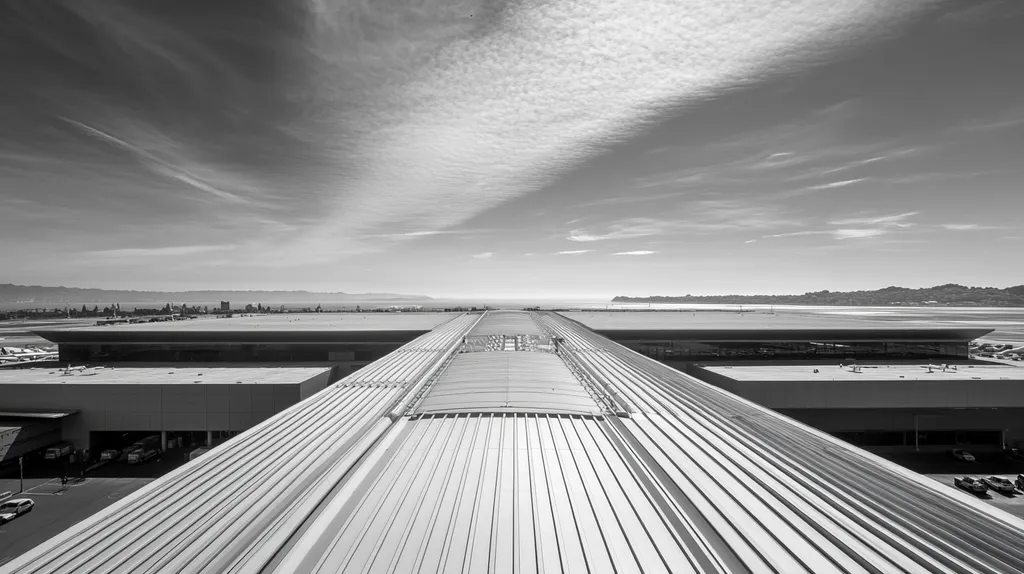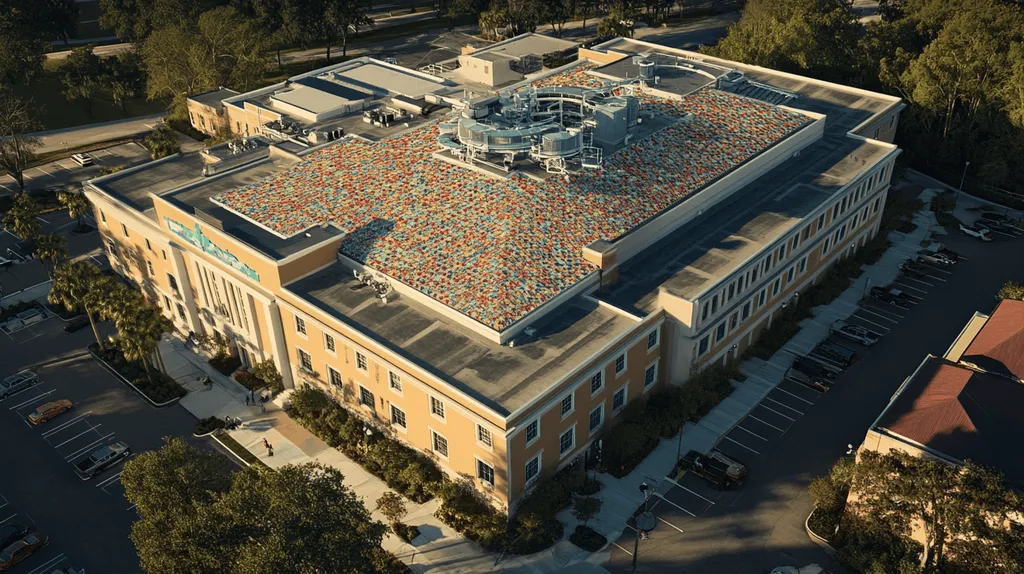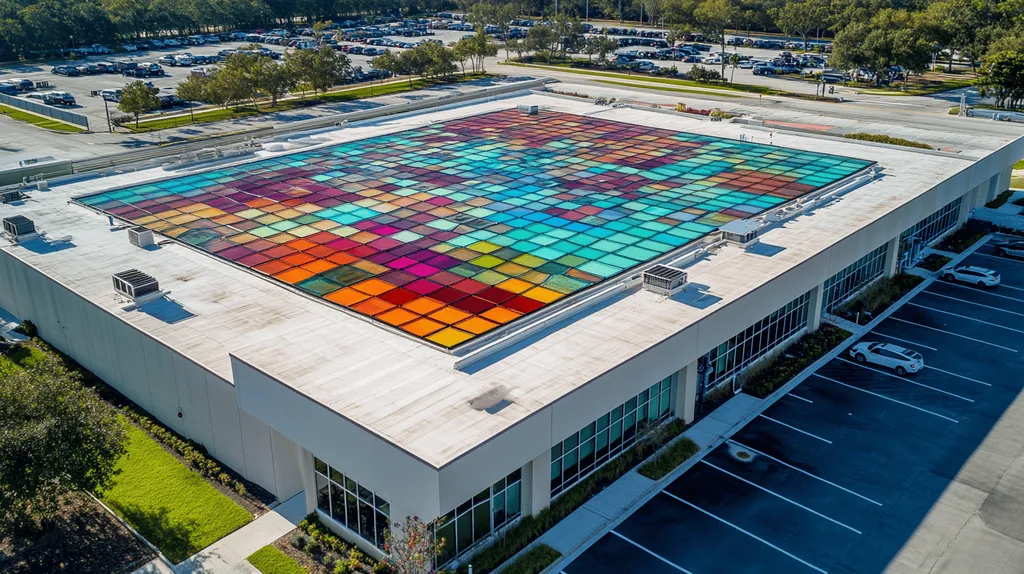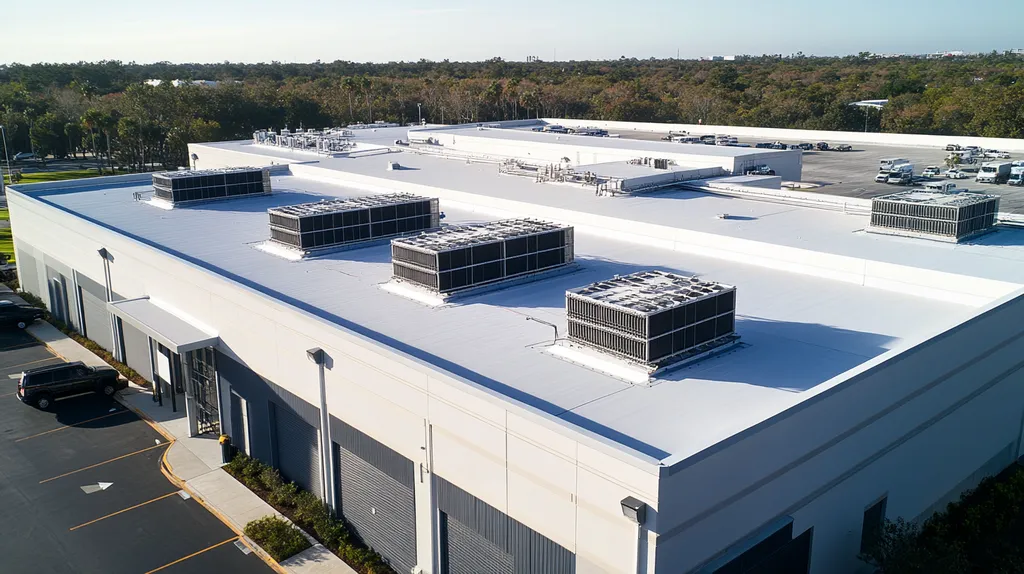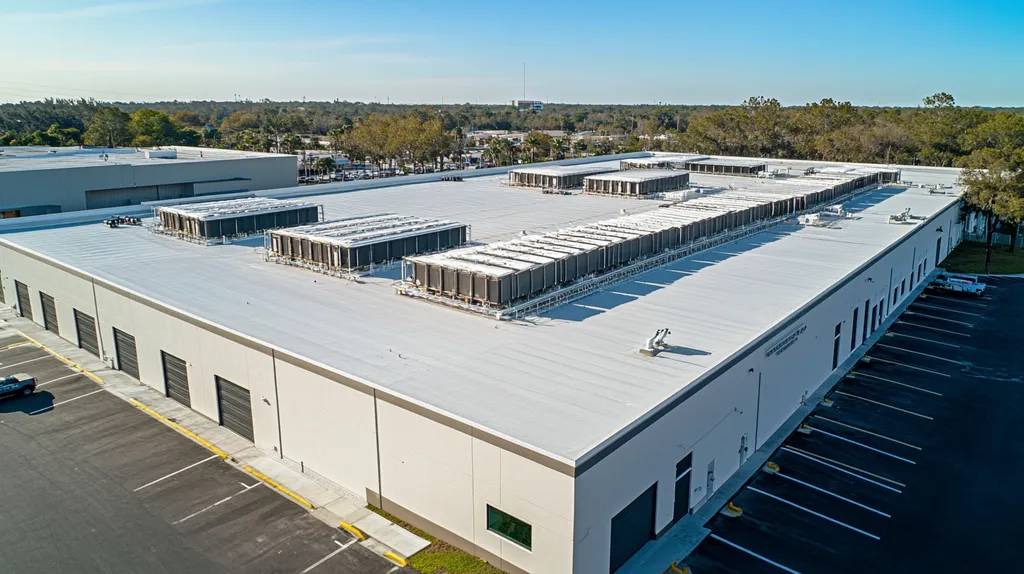In today’s fast-paced industrial environment, a disrupted roof operation can cost facilities up to $5,000 per hour in lost productivity. Yet, misconceptions about roofing practices continue to plague facility managers, leading to costly mistakes and unnecessary downtime.
From excess insulation myths to contractor selection blunders, these roofing fallacies can transform routine maintenance into major operational headaches. Recent studies show that 67% of industrial roof failures stem from preventable mistakes based on outdated information.
This guide cuts through common roofing myths, delivering practical, evidence-based solutions that keep operations running smoothly while protecting your facility’s most vital asset.
SECTION 1: COMMON MISCONCEPTIONS
Facility managers often chase cost-cutting and efficiency boosts based on popular roofing beliefs. Unfortunately, these misconceptions can lead to serious disruptions in operations and expensive repairs. It’s vital to uncover the truth about these ideas to keep your roofing system in top shape. In this section, we’ll unravel three prevalent misconceptions about industrial roofs: the myth of excess insulation, the misguided reuse of wet insulation, and the idea that anyone can install commercial roofs.
Excess Insulation is Always Beneficial
One of the most widespread misconceptions is that piling on insulation will automatically enhance energy efficiency. The reality is that effective insulation strikes a balance between thermal resistance and proper ventilation. Too much insulation can actually trap moisture, creating condensation problems.
For example, a facility that added extra insulation without addressing its ventilation suffered from severe dampness, putting the roof’s structure at risk. The expenses incurred to fix these issues far outweighed any anticipated energy savings.
Also, excess insulation increases the dead load on the roof, raising the risk of structural damage during extreme weather events. It’s essential to design roofs with optimal insulation levels tailored to specific environmental needs.
Consulting with roofing experts is key to determining the right insulation strategy that meets energy goals while ensuring structural safety.
Reusing Wet Insulation is Acceptable
Another common myth among facility managers is that reusing wet insulation during roofing repairs is perfectly fine. This misconception can lead to severe long-term complications, such as mold growth and reduced insulation effectiveness. Wet insulation simply can’t provide the thermal resistance needed to keep energy bills in check.
In fact, numerous industrial properties have encountered skyrocketing energy costs after reusing wet insulation due to its poor performance. This ultimately forced owners to spend more trying to compensate for the loss of efficiency.
Additionally, wet insulation can inflict further damage on the roof system, leading to rot and corrosion of supporting structures. To avoid these issues, a thorough inspection and replacement of compromised materials is crucial for ensuring long-lasting performance.
Facility managers should always prioritize using dry, well-stored insulation materials, even if it entails incurring some upfront costs. The long-term benefits of maintaining an efficient and safe roofing system far outweigh those initial expenditures.
Anyone Can Install Commercial Roofs
Many facility managers seriously underestimate the level of skill and experience required for proper commercial roofing installation. The notion that “anyone can install roofs” can lead to shoddy workmanship, resulting in leaks and premature roof failures. Roofing systems require specialized knowledge in materials, building codes, and installation methods.
For instance, a facility manager who hired a general contractor without roofing experience discovered that his roof developed leaks within the first year, necessitating costly repairs. Engaging qualified roofing professionals not only protects against early failures but also ensures the longevity of the roofing system.
Furthermore, improper installation can void manufacturer warranties, leaving property owners vulnerable to expensive repairs. Hiring certified and experienced roofing contractors is essential for protecting investments and promoting seamless operations.
Recognizing the importance of hiring skilled professionals is crucial, as it directly affects both the lifespan of the roof and the operational efficiency of the facility.
SECTION 2: PRACTICAL IMPLICATIONS
Ignoring the impact of roofing choices can lead to substantial disruptions for facility managers and property owners. In fact, studies show that poor roofing practices can cut a building’s lifespan by up to 50%. Highlighting the stakes, this section delves into how roofing decisions can affect performance, energy expenses, and maintenance requirements. Making informed choices is not just wise; it’s essential!
Impact on Roof Performance and Durability
The performance and longevity of industrial roofs hinge significantly on the quality of installation and materials chosen. Using inferior materials can lead to leaks and rapid deterioration, which can result in the roof failing far sooner than expected.
Research indicates that well-maintained roofs can last an impressive 30 years or longer. In stark contrast, neglected roofs may deteriorate within a decade. Thus, selecting the appropriate roofing solution is critical, bearing both immediate and long-term consequences.
Moreover, roofs tailored to withstand specific environmental challenges are essential for maintaining their integrity. When this aspect is overlooked, the risk of costly repairs and operational interruptions skyrockets.
Investing in high-quality materials and expert labor ultimately pays dividends by prolonging the roof’s lifespan and ensuring smooth operations with minimal interruptions.
Effects on Energy Efficiency and Costs
The choice of roofing system dramatically influences energy efficiency, directly affecting operational costs. For instance, a well-insulated roof can lower heating and cooling expenses by as much as 20%.
Certain roofing materials also have the ability to reflect solar radiation, drastically reducing energy demands during the sweltering summer months. Evaluating options like cool roofing or reflective membranes can effectively decrease these costs.
Conversely, damaged or poorly insulated roofs can lead to significant energy waste. This not only elevates utility bills but puts extra strain on HVAC systems, resulting in inflated maintenance costs.
In today’s energy-conscious world, making savvy roofing choices not only preserves finances over time but also enhances a building’s sustainability profile.
Consequences for Maintenance and Repairs
Regular maintenance and timely repairs are indispensable for the longevity of industrial roofs. Unfortunately, many facilities underestimate the importance of proactive care until significant issues arise.
Overlooking routine inspections can lead to spiraling repair costs and unnecessary operational downtimes. For instance, a seemingly minor leak can create extensive damage, necessitating more complicated and expensive repairs.
A comprehensive maintenance program can catch issues early, translating to savings in both time and money. Strategies such as consistent inspections and tailored preventive measures can be adapted to specific roofing types and operational needs.
Ultimately, investing in a solid maintenance strategy not only minimizes disruption but also cultivates a safer, more efficient work environment.
SECTION 3: COST OF MISINFORMATION
The consequences of misinformation in industrial roofing can be staggering. A recent study revealed that delaying essential repairs can inflate expenses by as much as 25%. Misunderstandings about roofing materials and installation not only jeopardize financial resources but also threaten operational efficiency. To safeguard both budgets and business continuity, addressing these misconceptions is crucial.
Financial Consequences of Delayed Repairs
Delaying critical repairs can lead to hefty price tags for any industrial facility. Water infiltration, a seemingly small issue, can wreak havoc on equipment and inventory. The longer these issues go unaddressed, the bigger—and more costly—the repairs become.
Facility managers often underestimate how quickly minor leaks can escalate into major repairs. A small patch may spiral into needing a complete roof replacement, with costs potentially reaching into the tens of thousands of dollars.
Additionally, prolonged downtime during repairs can diminish productivity. With each day a facility operates below full capacity, the financial impact grows significantly. Therefore, viewing timely repairs as an investment rather than an expense can reshape the approach to roofing maintenance.
By choosing to act swiftly, facility managers can save considerable amounts in the long run and ensure seamless operations.
Costs Associated with Incorrect Material Choices
Selecting inappropriate roofing materials can have repercussions that extend far beyond aesthetics; it can jeopardize the roof’s long-term sustainability. Facility managers may lean toward seemingly cost-effective alternatives, but this often leads to regretful choices.
For instance, subpar materials can falter under extreme weather conditions, prompting premature replacements. Additionally, if materials do not match the facility’s specific needs, warranties on roofing products can be voided, creating further expenses.
The wrong choice can also inflate energy costs. Poor thermal performance not only necessitates high heating and cooling expenses but can erase any initial savings on materials. Prioritizing informed decisions when selecting materials is essential to safeguarding financial investment over time.
While investing in quality materials may seem daunting, the long-term benefits of durability and efficiency make it worthwhile. Facility managers should strive to prioritize smart material choices.
Economic Impact of Improper Installation
The financial implications of poor roofing installation can be severe and long-lasting. A faulty installation jeopardizes the roof’s longevity and invites continual maintenance headaches. Each mistake made during installation can create significant financial burdens down the line.
For example, improper sealing techniques or inadequate drainage can lead to severe water issues, resulting in rot and mold. The cost of remediation can surpass the original installation expenses exponentially.
Furthermore, failures to meet local codes can result in regulatory repercussions. Fines may accumulate, and forced repairs can disrupt day-to-day operations, causing additional economic strain.
By prioritizing quality installation practices and engaging qualified professionals, facility managers can mitigate these risks. Proper installation not only protects the facility’s future but also enhances overall operational efficiency.
SECTION 4: REALITY CHECK
In the realm of industrial roofing, understanding the intricate elements of insulation, contractor credentials, and diverse system options is crucial to maintaining efficient operations. Inaccurate insulation measurements can lead to soaring energy bills, costing companies thousands each year. Opting for unlicensed contractors can result in dangerous work, undermining safety and performance. By grasping these vital concepts, facility managers can markedly improve roof functionality while minimizing disruption to everyday operations.
Importance of Proper Insulation Measurement
Insulation is essential for maximizing the energy efficiency of an industrial roof. When insulation is inadequate or incorrectly measured, heat can escape during winter and seep in during summer, leading to inflated energy costs. Facilities lacking proper insulation often experience a shock in their energy bills—sometimes by as much as 30%—which directly impacts the bottom line.
Taking the time to measure insulation correctly is a game changer, ensuring roofs are designed for the local climate. Facility managers should enlist the expertise of professionals to perform thorough assessments that align with industry standards. Accurate insulation measurements yield noticeable energy savings and enhance the overall comfort of building occupants.
Additionally, insufficient insulation can threaten the structural integrity of the roof. Prolonged exposure to excess heat and moisture jeopardizes roofing materials, leading to costly repairs or premature replacements. Consequently, investing in precise insulation measurement is a proactive strategy that diminishes energy costs and extends the roof’s lifespan.
In sum, accurately measuring insulation is paramount for averting operational disruptions and promoting facility efficiency. Without this essential step, facility managers risk incurring significant long-term financial consequences.
Necessity of Licensed and Certified Contractors
Choosing licensed and certified contractors is imperative for successful roofing projects. These professionals bring the expertise required to comply with safety regulations and building codes. By opting for unlicensed contractors, facilities open themselves up to potential legal issues and serious safety risks.
A licensed contractor possesses the skills needed to assess roofing requirements, suggest suitable materials, and execute high-quality installations. Investments made with certified professionals help protect facilities and reduce risks. Poor workmanship from unqualified contractors often results in leaks and structural damage that can lead to costly operational downtime.
Moreover, certified contractors typically carry insurance, shielding facility managers from liability in the event of accidents during the project. Working with experienced professionals minimizes potential problems and ensures timely and budget-friendly project completion.
In conclusion, selecting licensed and certified contractors isn’t just a best practice—it’s essential for ensuring operational continuity and financial well-being. This choice directly contributes to creating a safe and efficient workspace for all employees.
Diverse Commercial Roofing System Options
Knowing the various commercial roofing system options is crucial for facility managers. Different types—TPO, EPDM, metal roofs—offer unique advantages tailored to specific operational needs. The performance of each system can significantly affect a building’s energy efficiency, durability, and overall operational costs.
Take TPO roofs, for instance; they’re celebrated for their reflective properties that help reduce cooling costs. In contrast, EPDM membranes may provide exceptional longevity in particular climates. Understanding these distinctions empowers managers to make informed choices that align with performance goals, budget constraints, and the specific requirements of their facilities.
Additionally, selecting the right roofing system can minimize disruptions during installation or replacement. Certain roofing systems can be installed quickly, causing minimal disturbance to daily operations, allowing facilities to strategize projects without significant workflow interruptions.
Ultimately, being aware of available roofing systems equips facility managers to identify solutions that meet operational needs while focusing on long-term sustainability. This strategic approach is indispensable for avoiding future disruptions and enhancing overall facility performance.
SECTION 5: EVIDENCE-BASED ALTERNATIVES
Making informed roofing decisions is crucial for facility managers aiming to minimize operational disruptions. A 2022 study revealed that inadequate roofing maintenance can lead to as much as a 30% increase in downtime. By choosing the right materials, sticking to regular maintenance routines, and investing in energy-efficient systems, managers can not only enhance the roof’s performance but also protect the productivity of their operations. This section dives into effective, evidence-based alternatives that can significantly affect both costs and management strategies.
Selecting the Right Roofing Materials
The choice of roofing materials significantly influences both durability and maintenance costs. For instance, TPO (Thermoplastic Olefin) and EPDM (Ethylene Propylene Diene Monomer) are increasingly favored for their blend of affordability and longevity. These materials excel in reflecting harmful UV rays, helping prolong roof life and slashing cooling costs.
Facility managers should factor in local climate conditions when selecting materials. In regions prone to heavy snowfall, it’s essential to choose a roofing system capable of handling snow load. Failing to match materials to climatic demands can result in costly damage and unexpected operational hurdles.
Moreover, investing in high-quality membranes minimizes the frequency of repairs and extends service life. This proactive choice helps avoid those pesky leaks that disrupt operations and create headaches.
Ultimately, prioritizing superior materials upfront can lead to considerable budget savings over time. Facility managers who align their material choices with operational needs can anticipate fewer disruptions and a smoother operational flow.
Implementing Regular Maintenance and Inspections
Regular maintenance and inspections are indispensable for the longevity of industrial roofs. Research shows that proactive care can extend a roof’s lifespan by up to 50%. Scheduled inspections identify potential problems before they balloon into costly repairs or significant downtime.
Establishing a routine maintenance plan is crucial for preventing leaks and other damage. Inspecting key areas such as seams, flashing, and membrane integrity at least twice a year helps catch issues early on. A small investment in regular check-ups can save substantial expenses during high-demand periods.
Employing experienced professionals for inspections brings valuable industry insights that can uncover hidden problems. Technicians skilled in various roofing systems are better equipped to assess the overall integrity of complex industrial roofs.
Additionally, maintaining transparent records of inspections enhances planning and budgeting. This documentation allows facility managers to anticipate future repairs and allocate resources effectively, ensuring steady operations. Establishing a routine inspection schedule is crucial to maintain the integrity of your commercial roof. Regularly evaluating your roof helps identify common signs of damage, such as roof leaks or ice dams, which may require insurance claims assistance. (source: Schulter Roofing)
Installing Energy-Efficient Roofing Systems
Energy-efficient roofing systems have become essential for modern industrial facilities. Opting for reflective materials can deliver substantial energy savings and lower overall operational costs. Studies indicate that energy-efficient roofs can reduce cooling expenses by as much as 30%.
Moreover, these systems often come with warranties that can extend the roof’s lifespan. Using materials with excellent insulation properties helps improve climate control inside the facility, enhancing worker comfort and productivity.
Features like green roofs provide dual benefits: insulating the building while managing stormwater runoff and enhancing air quality in urban settings. This multifaceted approach creates ecological and economic advantages for facility managers.
As communities and customers increasingly prefer businesses that show dedication to sustainability, adopting energy-efficient roofing systems can enhance brand reputation and strengthen customer loyalty. Prioritizing green solutions makes good business sense and helps secure a competitive edge.
SECTION 6: TEST AND VERIFY
In the world of industrial roofing, the stakes aren’t just high—they’re sky-high! Neglecting routine maintenance can lead to costly leaks, safety hazards, and expensive downtime. A study even reveals that ignoring roofing issues can inflate overall maintenance costs by as much as 20%. That’s why rigorous testing and verification are non-negotiable for facility managers. This section dives into the importance of thorough roof inspections, compliance with industry standards, and keeping warranties and insurance in check.
Conducting Thorough Roof Inspections
Regular inspections of industrial roofs are vital for spotting and fixing potential problems before they snowball. Facility managers should schedule these check-ups at least twice a year to tackle season-specific issues like pooled water or UV damage head-on.
Employing certified roofing professionals is crucial for accurate assessments. These experts harness specialized tools, such as infrared thermography, to uncover hidden moisture lurking beneath the surface. Catching these issues early can be the difference between simple fixes and major overhauls.
Inspections should also encompass a comprehensive look at flashing, seams, and penetrations. Any inconsistencies unearthed during these evaluations should be documented and prioritized for repair. Letting these areas slide could lead to costly leaks and serious structural risks.
Ultimately, investing both time and resources into thorough inspections protects the facility’s operational integrity. By keeping roofs in peak condition, facility managers can sustain productivity and minimize long-term expenses.
Ensuring Compliance with Industry Standards
Compliance isn’t just about ticking a box; it’s a vital safeguard for your roofing system’s lifespan. Following guidelines from organizations like the American Society for Testing and Materials (ASTM) ensures roofs perform as they should without unexpected failures.
Facility managers must stay updated on local building codes and safety regulations that pertain to roofing work. Ignoring these standards can invite fines, hiked insurance premiums, and even legal issues. More alarmingly, non-compliant roofs may pose safety risks to employees and visitors.
Training staff on compliance is equally important. A solid understanding of these standards helps facility managers advocate for higher quality materials and craftsmanship from contractors. Investing in compliant roofing solutions fortifies the reliability of industrial roofs.
In essence, compliance serves as a benchmark for quality assurance. It diminishes the likelihood of costly mishaps while ensuring the roof meets its protective role, keeping operations safe and efficient.
Verifying Warranty and Insurance Requirements
Warranties and insurance are key players in defending against unexpected roofing challenges. Facility managers need to meticulously verify that their warranties cover materials and craftsmanship.
Grasping the nitty-gritty of warranty terms is critical. For instance, some warranties might void if routine maintenance isn’t carried out as specified. This oversight can result in significant financial implications when roof troubles arise.
Furthermore, adequate insurance coverage is paramount. Facility managers should engage with their insurance providers to confirm policies adequately cover roof-related damages. Insufficient coverage exposes a facility to towering losses.
Maintaining open lines of communication with contractors about warranty details is also beneficial. This clarity offers mutual understanding of responsibilities and expectations, fostering a more secure roofing experience. By proactively verifying warranties and insurance, facility managers safeguard their investments, ensuring peace of mind for the long haul.
Moving Forward
With industrial roof failures costing facilities up to $5,000 per hour in lost productivity, the stakes for proper roofing management couldn’t be higher.
The evidence is clear: 67% of roof failures stem from preventable misconceptions about insulation, materials, and installation practices.
By embracing evidence-based solutions—from proper insulation measurement to certified contractor selection—facility managers can dramatically reduce operational disruptions while extending roof lifespans by up to 50%.
Regular inspections, compliance with industry standards, and proper documentation of warranties remain the cornerstones of effective industrial roofing management.
The path forward requires abandoning outdated myths in favor of proven strategies that protect both the roof and the facility’s bottom line.
FREQUENTLY ASKED QUESTIONS
Q. Is excess insulation always beneficial for a commercial roof?
A. No, too much insulation can trap moisture and cause structural issues. It’s important to balance thermal resistance with ventilation needs to avoid costly damages that could outweigh any energy savings.
Q. How can poor roofing practices affect an industrial roof?
A. Poor roofing practices can dramatically reduce the roof’s lifespan and lead to costly repairs. Neglected roofs might fail within a decade, while well-maintained roofs can last over 30 years, impacting both cost and operational disruptions.
Q. What are the financial consequences of delayed repairs on industrial roofs?
A. Delaying essential repairs can inflate costs by over 25%. Small leaks can escalate into major issues requiring expensive repairs, and prolonged downtime can significantly hurt productivity and operational efficiency.
Q. Why is accurate insulation measurement important for a commercial roof?
A. Accurate insulation measurement ensures optimum energy efficiency and comfort. Inadequate insulation can lead to inflated energy costs, possibly increasing by 30%, and threaten the roof’s structural integrity, resulting in costly repairs.
Q. How can using energy-efficient roofing systems benefit my facility?
A. Energy-efficient roofing systems can reduce cooling expenses by up to 30%. They also improve indoor climate control, enhance worker comfort, and may include warranties that extend the roof’s lifespan, yielding long-term savings.
Q. What’s the significance of routine roof inspections for industrial roofs?
A. Routine inspections are vital for discovering hidden issues before they escalate. Scheduled check-ups can prolong the roof’s life and prevent significant damages, reducing long-term maintenance costs and minimizing disruptions to operations.
Q. When should I replace my commercial roof rather than just repair it?
A. If repairs become frequent or costly, it may be time for a replacement. Consider the roof age, extent of damage, and the potential for future issues. Investing in a new roof could ultimately save money and enhance efficiency.

